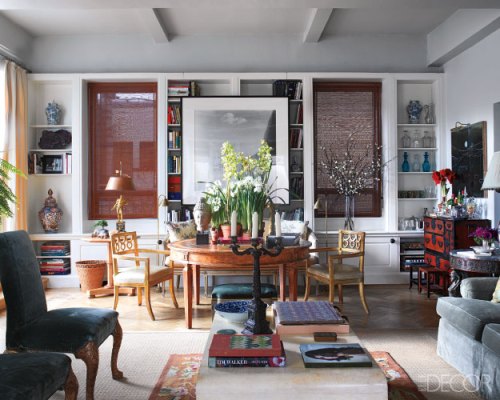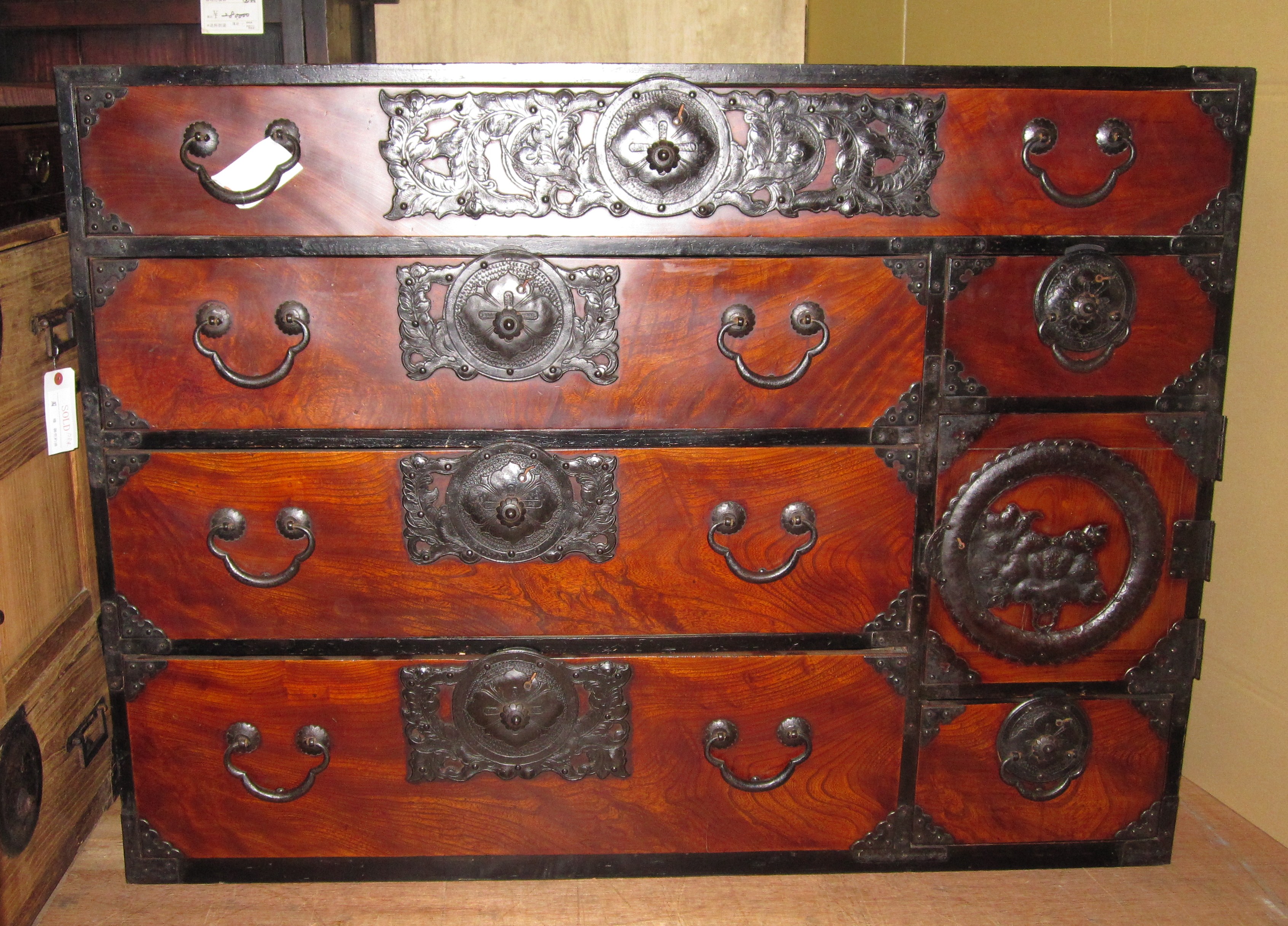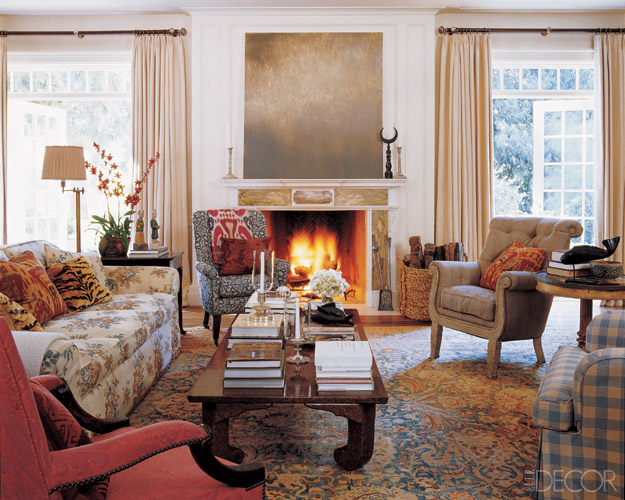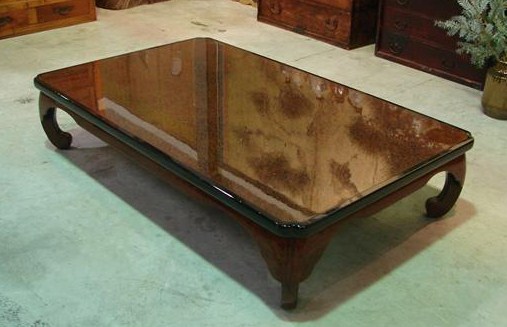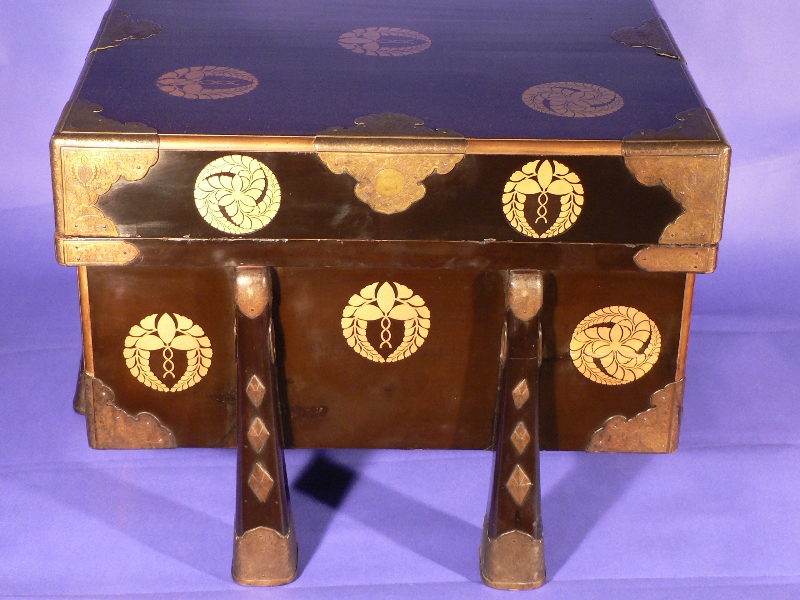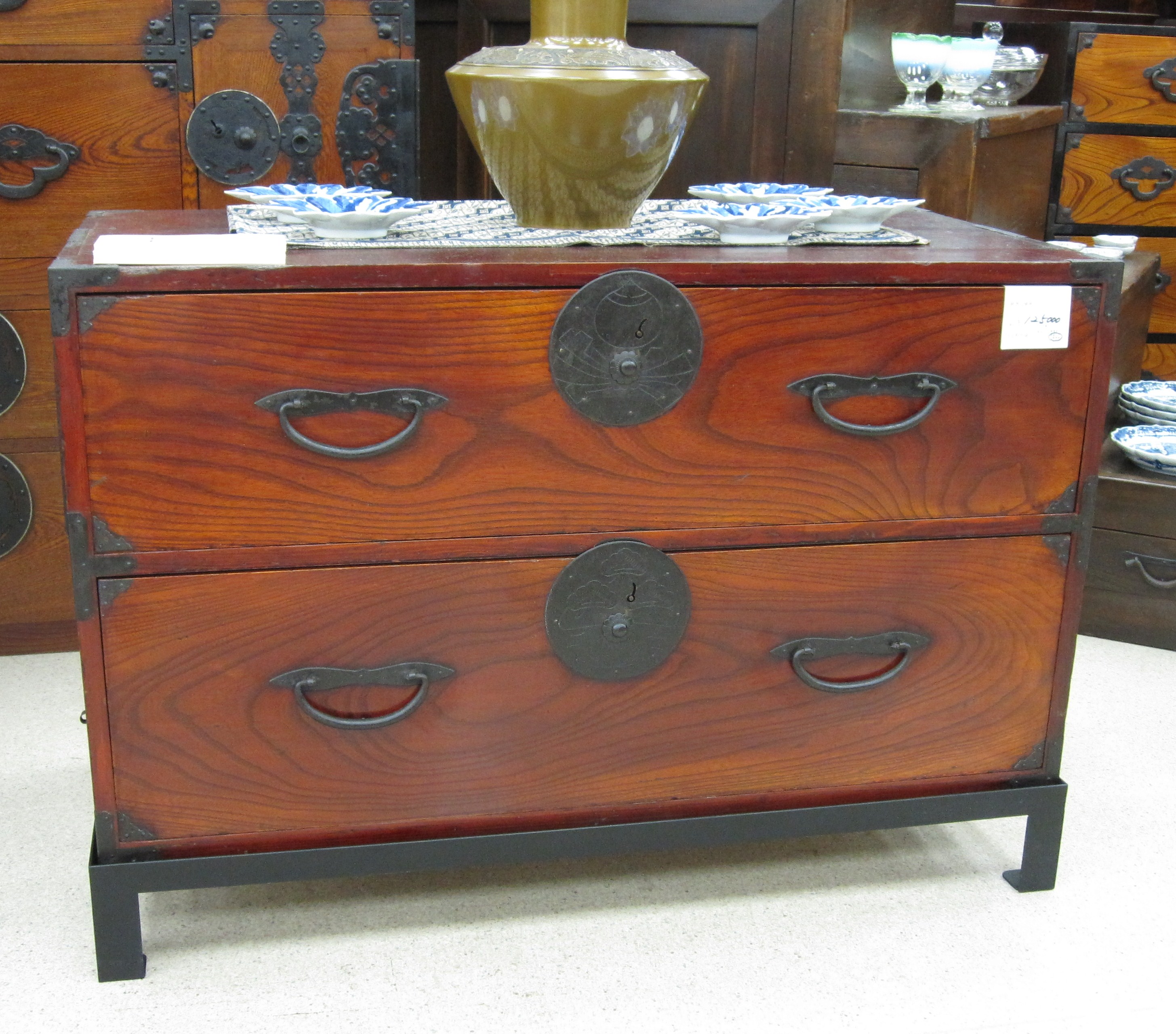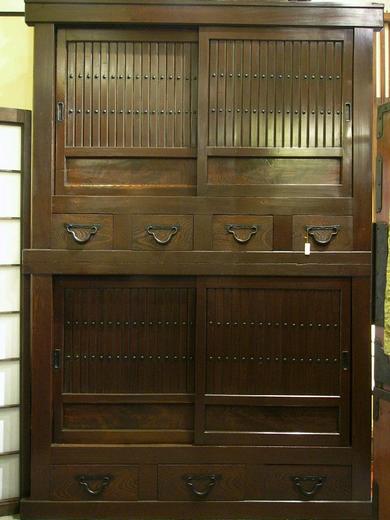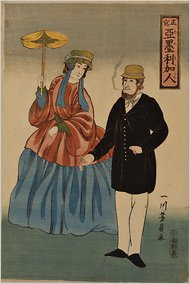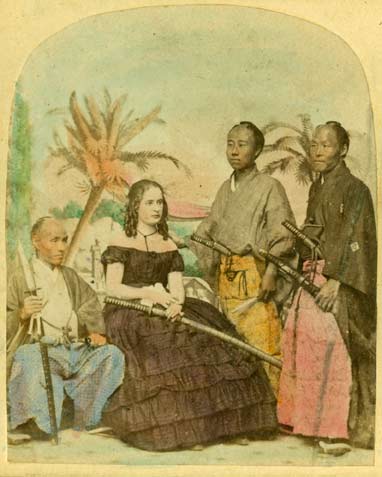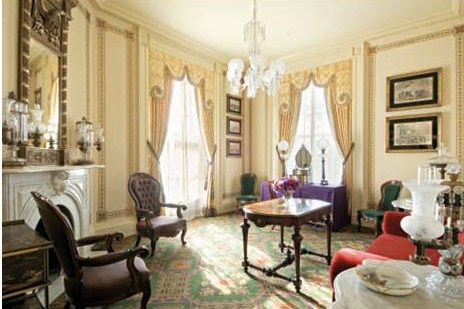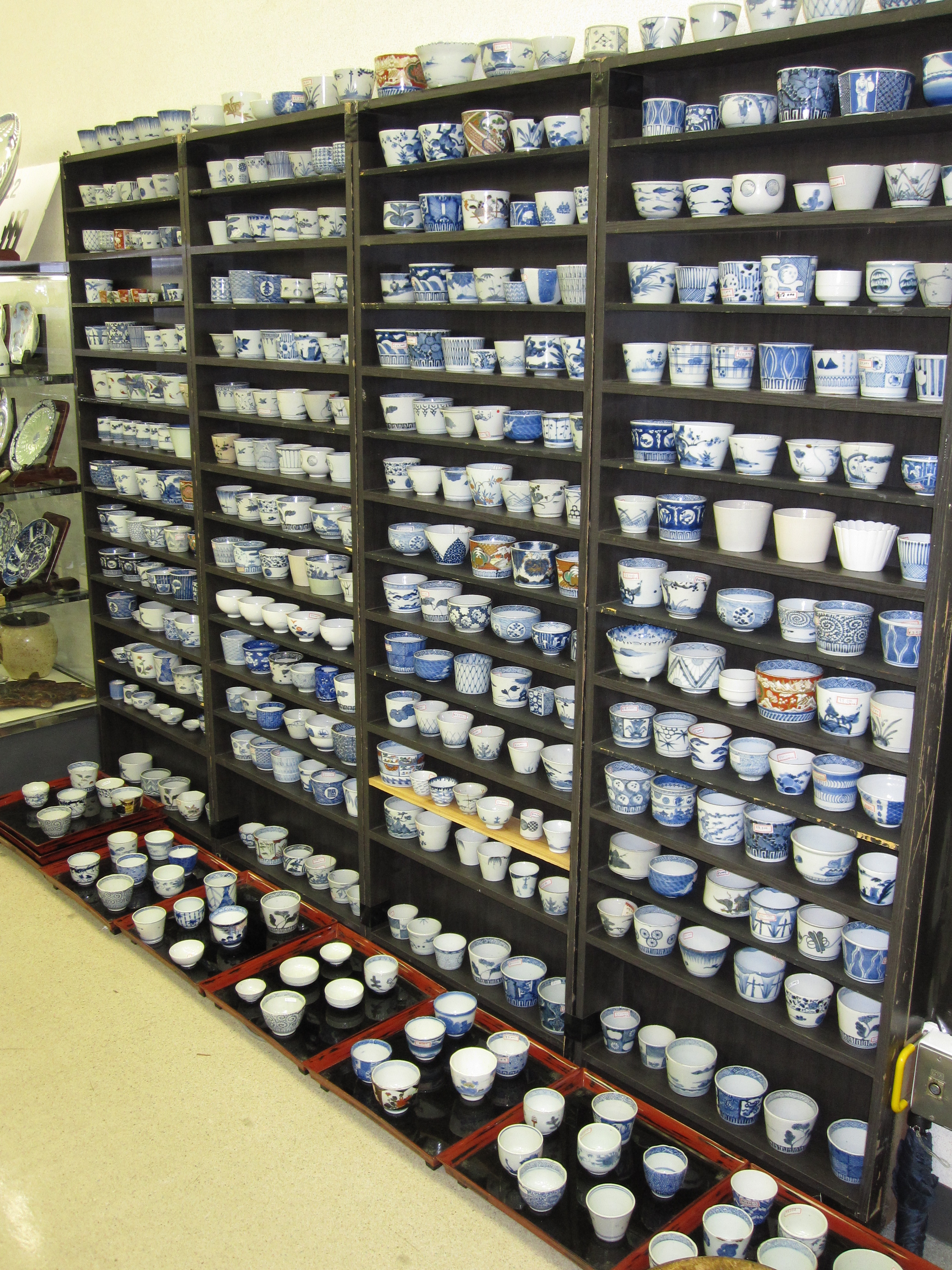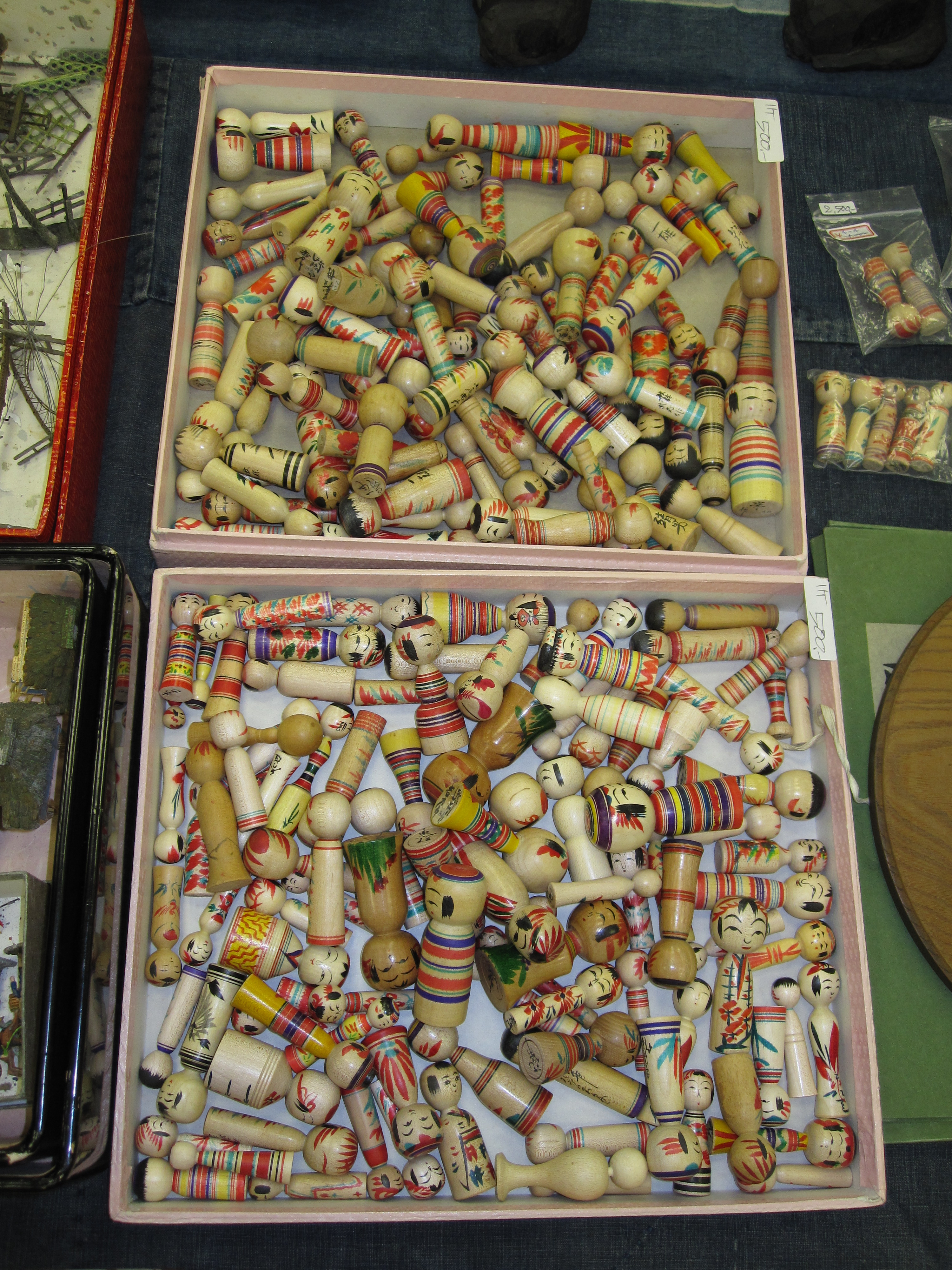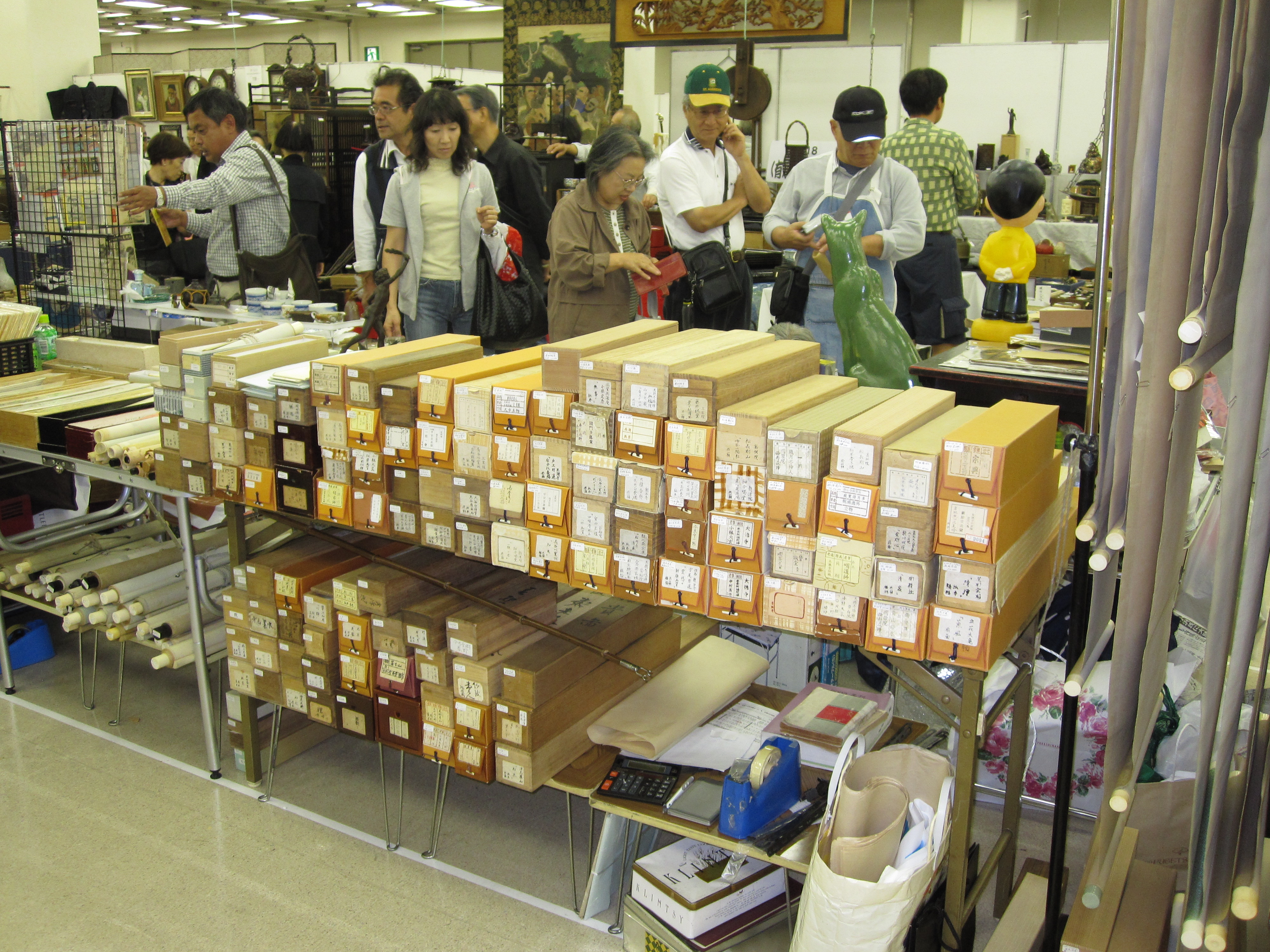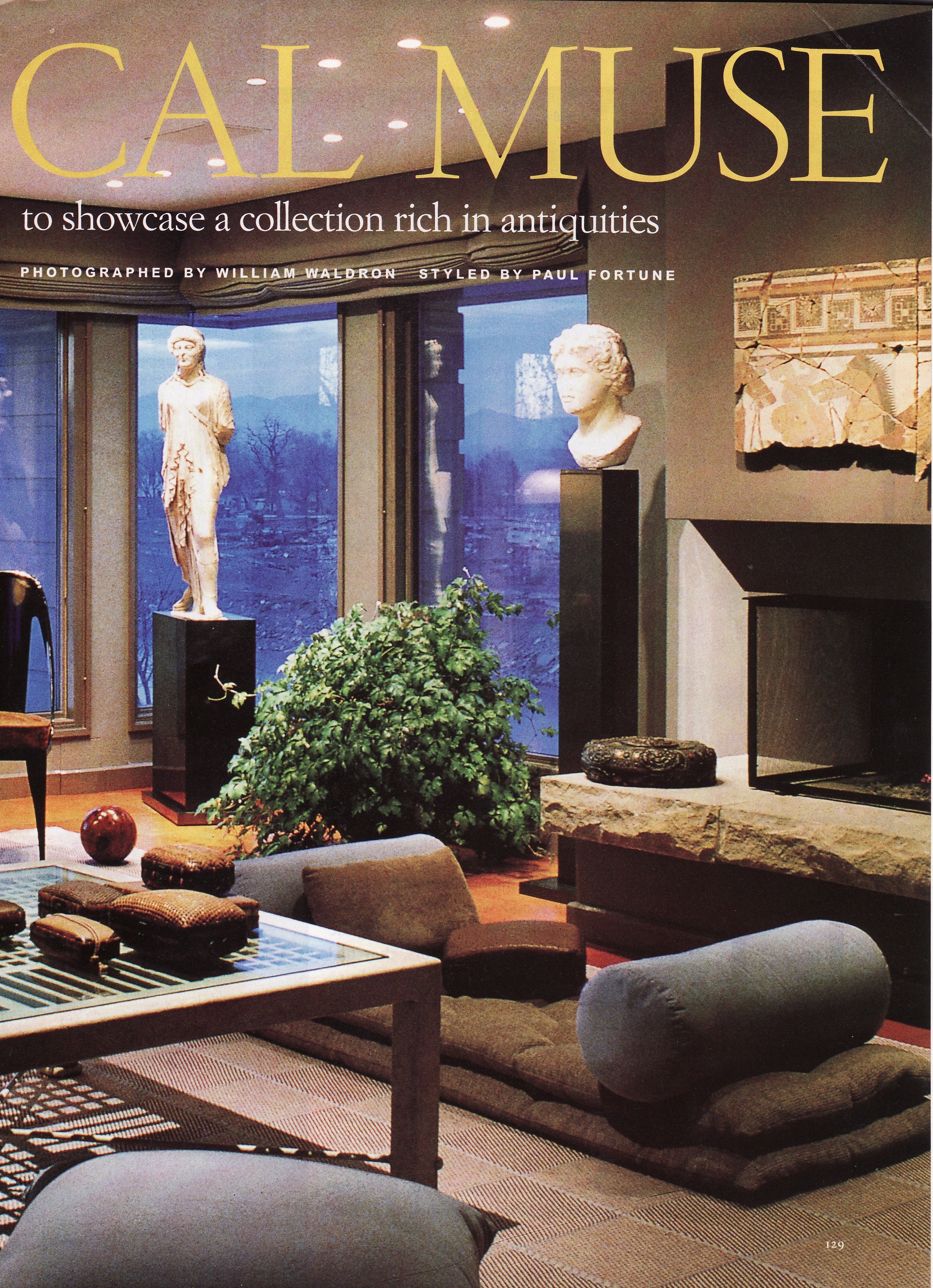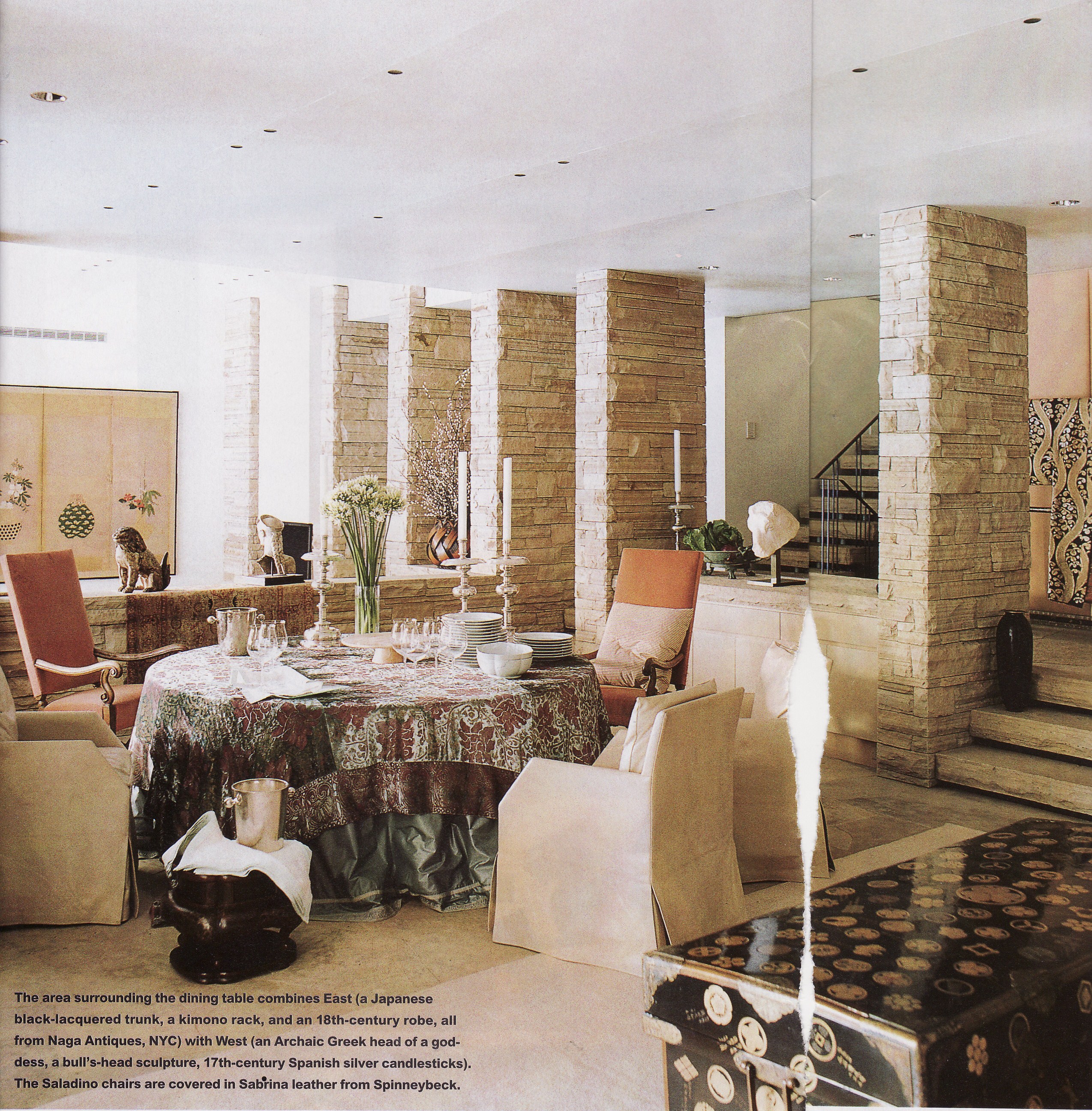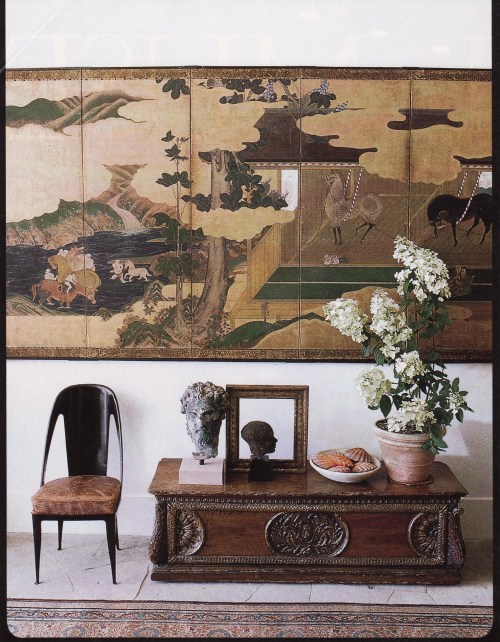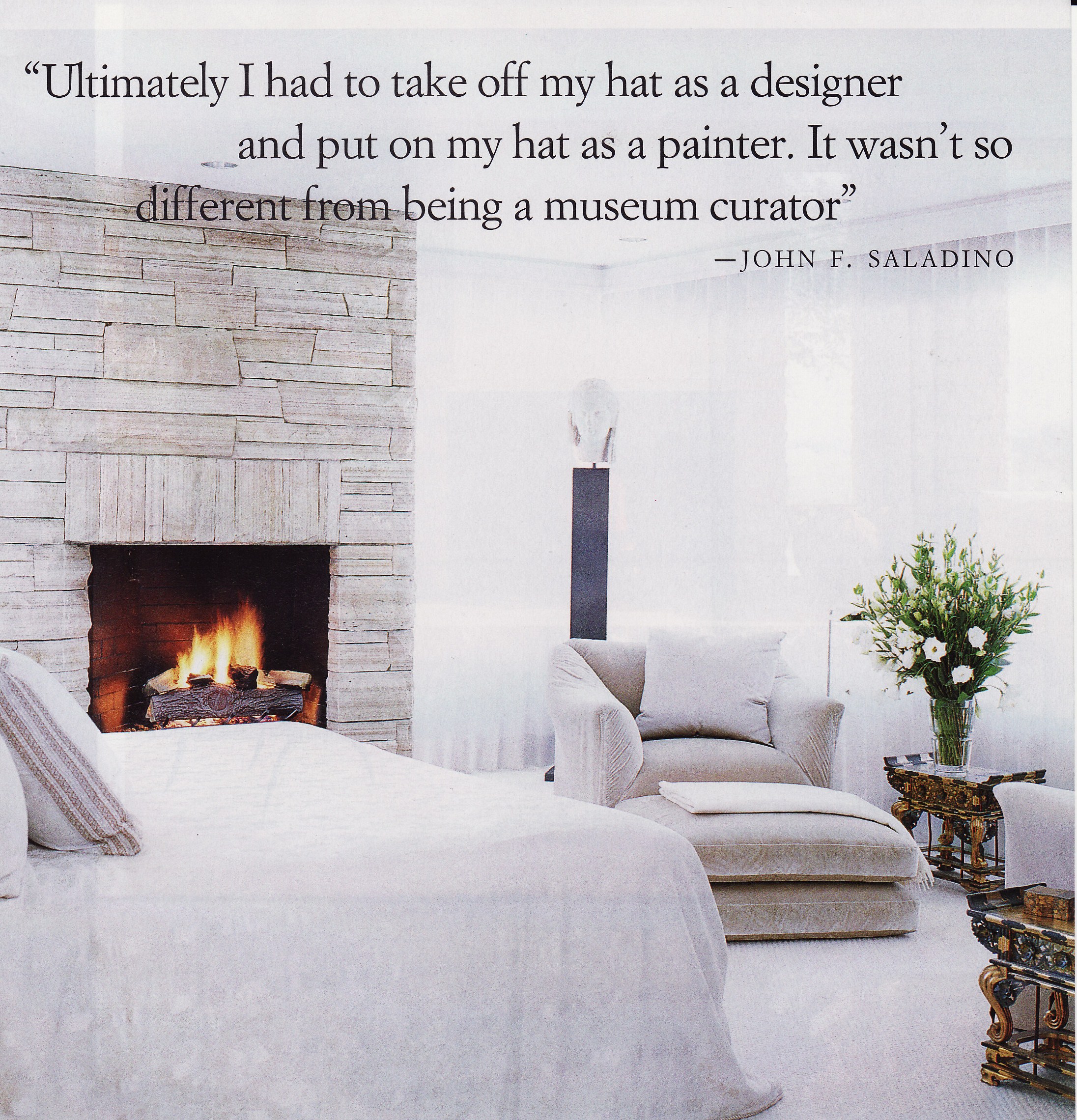Michael Smith first imprinted himself on my consciousness with the apartment he designed for Cindy Crawford in the Police Building in New York City. I still have the entire Oct/Nov. 1997 issue of Elle Decor because I could not bear to tear out the pages. The apartment impressed me so much because it reminded me of my own – both the physical space and the look I was trying to achieve in decorating it. Smith seemed to bring a fresh view on using classic antiques paired with ethnic textiles and touches. I knew he was a talent to watch and I have early tear sheets of the homes he decorated for movie producers, actors and other Hollywood royalty in my files, including the first home Smith designed for actor James Belushi. This November, Architectural Digest featured Belushi’s new California home designed by Michael Smith, of course, but I think I like the smaller original one better!
Smith studied art at University, then worked briefly for antiques dealer Gep Durenberger and trained under John Saladino for a few years. You can see the Saladino influence on his designs, but whereas Saladino is more of a pure classicist, Smith adds the layering of traditional English country house style to his projects. When Saladino works with fine antiques, there is curatorial aspect to his perspective, art objet versus furniture. Smith’s interiors appear as though all the fine things are really used. After working with Saladino, he opened a home furnishings store in California. I imagine that is how he met all his early Hollywood clients.
As Smith mines deeply the lexicon of Japanese decorative arts, from furniture to folk craft to lighting, I thought it would be great fun to try to source the items in some of his interiors. I tried to stay local, but occasionally had to resort to the internet (and even use a piece of my own). First up is his New York apartment, featured in Elle Decor. The standout piece is the isho tansu (clothing chest) in the right hand corner of the living room. Also note the Japanese style blinds and the covered Imari urn on the left hand side bookcase. I’ve written so much about Imari porcelain lately, that I won’t post another photo here…
Here is a standout Sendai region tansu very similar to the one in his living room.
Next up are the door panels mounted to the wall in his entry hall in Manhattan. The grill work pattern is a classic, one of the most common Japanese motifs called seigaiha or seikaiha (English translation spelling varies). Used extensively throughout the decorative arts on textiles, ceramics, etc., it is also often seen on exterior buildings and walls. My best match up is a similar door with an overlayed circle pattern called shippou-tsunagi (seven treasures pattern).
Smith seems to enjoy using Japanese pieces in his own homes. Moving on from Manhattan to his home in Bel Air, also featured in Elle Decor, we find traditional low tables used in the living room and sunroom. These tables were not originally made to be used as coffee tables – sitting on the floor was the norm, therefore the low height. Some smaller low tables were used for altar displays.
Here is an art deco era lacquer low table, combining the curved legs of the table in the living room, with some of the color and fanciness of the table in the sun room.
The blue and white porcelain in the Bel Air home is just gorgeous (as are the peonies)! I love the repurposed vase lamp, but it is the moon flask vases which are particularly special.
I’m cheating a little here and sourcing from my own house…
Michael Smith also has (or had) a house in Santa Monica. I wish I knew the date on this photo spread but I didn’t mark it down when I tore it out. I do know it is quite early and I imagine he no longer lives here. For me, this represents California casual decorating at its best. The plain silvered byobu (screen) behind the sofa reminded me of this lovely plain screen I saw at an antique show last month.
Rather than focussing on the gilt and wood cabinet in the hallway of a London project, I thought the unusual placement of a wood and inlay hibachi (charcoal brazier) as an accent piece on the floor was ingenious. This is an easy piece to match. Found at shrine sales and antique stores, it simply is a matter of picking size and design. I saw an inlaid hibachi with hydrangea once and passed it up. Now I am waiting to find another.
The amazing lacquer trunk under the table in this next photo challenged me and I couldn’t find an exact match nor could I stay local. Instead, I have gone to the Naga Antiques site and pulled up this lacquer samurai armor chest. Note the blue and white vase lamp here too.
One of his most beautiful projects is this Malibu home featured in the October 2009 Elle Decor. I find it to be less English country house and the most “Saladino” like of his recent projects. The bedroom has such perfect proportions and symmetry, with its John Robshaw bed and gorgeous inlaid small tansu on stands used as the night tables. Blue and white lamps too!
I couldn’t find any lacquer ones right now, but these small chests on stands are not hard to come by.
I used the kitchen in this house in one of my earliest posts and I keep coming back to the perfection of this room. The sleekness of the modern streamlined kitchen combined with the rustic mizuya tansu (kitchen cupboard) and those amazing pre-WWII light fixtures hanging from the wooden ceiling beams. I found a second view too, highlighting the gorgeous metal stove hood and a small collection of bamboo baskets on the upper shelves. This tansu here looks to be late 18th century, while most readily available today are late 19th century, like the one sourced below. The light fixtures in the photo are fabric stretched over a metal frame. I have sourced some milk glass ones from the same period with metal detailing on the outside.
Michael Smith’s interiors are unusual in that he weaves in Japanese antiques in almost ever project he does – rare in the decorating world we see published in the glossy magazines. Testament to his greatness is the way they fit seamlessly into the eclectic melange he conjures.
Image credits: 1 & 3. Elle Decor April 2010, photo credit: Simon Upton, 2, 4, 12, 16-17 and 21. Kanarusha Antiques, 5-6 and 8. Elle Decor, photo credit: Simon Upton, 7. Edo Arts, 9 and 20. Okura Oriental Art, 10. me, 11. Metroplitan Home?, date unknown, 12. Michael S. Smith, 13. Not sure of attribution here, please let me know, 14. Naga Antiques, 15 and 19. Elle Decor October 2009, photo credit: Simon Upton, 18. via Chinoiserie Chic.

